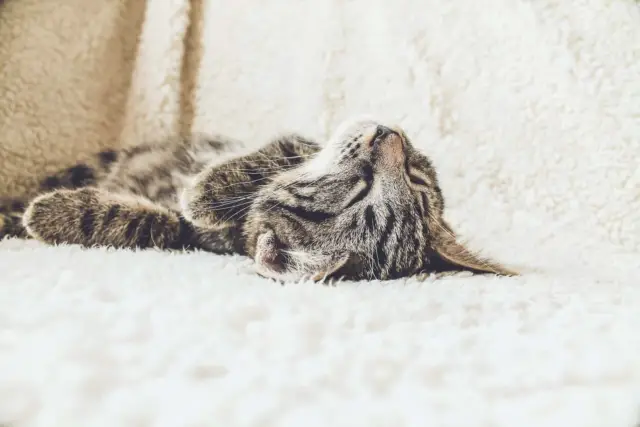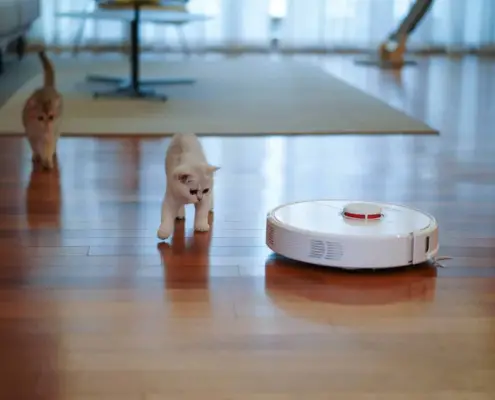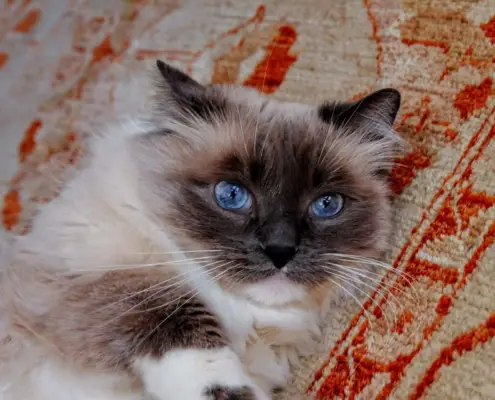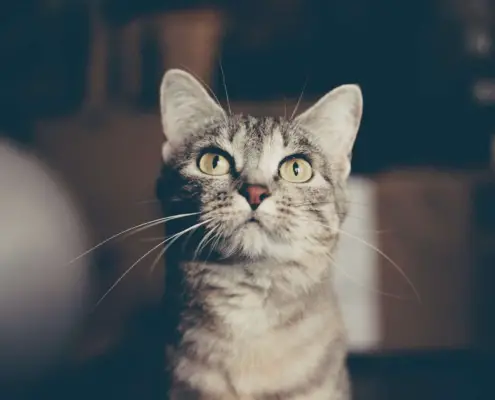
Cats are fascinating creatures, known for their grace, agility, and stealth. But have you ever wondered what lies beneath their soft fur? In this article, we will take a deep dive into a cat’s skeletal system, exploring its structure, function, and importance. Understanding a cat’s skeletal system can provide valuable insights into their behavior, health, and overall well-being.
The Structure and Function of a Cat’s Bones
A cat’s skeletal system is an intricate network of bones that provides support, protection, and mobility. The bones serve as the framework for the cat’s body, giving it shape and form. The structure of a cat’s bones is unique, as they are lightweight and flexible, allowing for quick movements and leaps. The bones are made up of living tissue, constantly undergoing a process called remodeling, where old bone is broken down and replaced with new bone.
The main functions of a cat’s bones are to support the body, protect vital organs, produce blood cells, and facilitate movement. The long bones of the legs, such as the femur and tibia, provide support and allow for jumping, climbing, and running. The skull protects the brain, while the ribcage shields the heart and lungs. The bone marrow inside the bones is responsible for producing red and white blood cells, which are essential for a cat’s immune system.
Types of Bones in a Cat’s Skeletal System
A cat’s skeletal system consists of different types of bones, each with its own unique characteristics and functions. The long bones, as mentioned earlier, are found in the limbs and are responsible for providing support and facilitating movement. Short bones, on the other hand, are found in the cat’s wrists and ankles, contributing to stability and flexibility.
Flat bones, such as those in the skull, shoulder blades, and pelvis, offer protection to vital organs. These bones are broad and thin, providing a large surface area for muscle attachment. Irregular bones, like those in the spine, have complex shapes and play a crucial role in supporting and protecting the spinal cord.
The Role of Joints in a Cat’s Skeletal System
Joints are where two or more bones meet, allowing for movement and flexibility. In a cat’s skeletal system, joints are essential for their agile movements and acrobatic feats. There are several types of joints in a cat’s body, including hinge joints (like the elbow and knee), ball-and-socket joints (like the shoulder and hip), and pivot joints (like the vertebrae in the neck).
Healthy joints are crucial for a cat’s overall mobility and comfort. However, as cats age, joint problems can arise, leading to conditions like arthritis. It is essential for cat owners to provide proper nutrition, exercise, and veterinary care to maintain their cat’s joint health.
The Importance of the Spine in a Cat’s Skeletal System
The spine is a vital component of a cat’s skeletal system, providing support, protection, and flexibility. Made up of individual bones called vertebrae, the spine allows cats to move, twist, and bend their bodies in various ways. Each vertebra is connected to the ones above and below it, forming a flexible column that houses and protects the delicate spinal cord.
Maintaining a healthy spine is crucial for a cat’s overall well-being. Any injury or condition that affects the spine can have a significant impact on a cat’s mobility and quality of life. Cat owners should be cautious when handling their cats and ensure they have a safe environment to prevent spinal injuries.
Common Skeletal Issues in Cats
While cats are known for their agility and flexibility, they are not exempt from skeletal issues. Some common skeletal problems in cats include fractures, dislocations, joint diseases, and spinal disorders. Fractures can occur due to accidents or falls from high places, and dislocations may happen as a result of trauma or genetic factors.
Joint diseases like arthritis are more common in older cats. Arthritis causes inflammation, pain, and stiffness in the joints, leading to reduced mobility and discomfort. Spinal disorders can occur due to injuries, degenerative conditions, or genetic abnormalities, and may result in paralysis or loss of sensation.
How to Keep Your Cat’s Skeletal System Healthy
As a responsible cat owner, there are several steps you can take to ensure your cat’s skeletal system remains healthy and strong. Providing a balanced and nutritious diet is crucial, as it supplies essential nutrients like calcium, phosphorus, and vitamin D, which are vital for bone health. Regular exercise helps keep your cat’s muscles and joints in good condition, promoting overall skeletal well-being.
Regular veterinary check-ups are essential for early detection and treatment of any skeletal issues. Your veterinarian can provide advice on proper nutrition, recommend supplements if necessary, and monitor your cat’s overall skeletal health. Additionally, providing a safe and stimulating environment for your cat can help prevent accidents and injuries that may affect their skeletal system.
Understanding the Aging Process and Its Impact on a Cat’s Skeletal System
As cats age, changes occur in their skeletal system, just as they do in humans. The bones may become weaker and more prone to fractures, and joint diseases like arthritis may develop. It is important to be aware of these changes and adapt your cat’s care accordingly.
Regular exercise becomes even more crucial for older cats, as it helps maintain muscle strength and joint flexibility. Providing comfortable bedding and ensuring easy access to food and water can help alleviate any discomfort caused by age-related skeletal changes. Regular veterinary check-ups are also vital to monitor the impact of aging on your cat’s skeletal system and make any necessary adjustments to their care.
Comparing a Cat’s Skeletal System to Other Animals
While cats have a unique skeletal system tailored to their specific needs, there are similarities and differences when compared to other animals. Cats belong to the family Felidae, which includes other big and small cats. Their skeletal structure allows for similar movements and behaviors, such as climbing, stalking, and pouncing.
Comparing a cat’s skeletal system to that of other animals can provide valuable insights into their evolutionary adaptations and ecological niche. It showcases how different species have evolved and specialized to thrive in their respective environments.
Conclusion
A cat’s skeletal system is a marvel of nature, providing the foundation for their agility, flexibility, and grace. Understanding the structure, function, and importance of a cat’s bones and joints can help cat owners provide optimal care and ensure their feline companions lead healthy and fulfilling lives. By paying attention to their cat’s skeletal health, providing proper nutrition, exercise, and veterinary care, cat owners can help their furry friends thrive and enjoy a life filled with vitality.
Please note that this article provides general information about a cat’s skeletal system and is not a substitute for professional veterinary advice. If you have any concerns about your cat’s skeletal health, consult with a qualified veterinarian.
If you enjoyed my article, I would appreciate you sharing it with your network.

Sima Ndlebe
Sima writes for CatBuzz. He is interested in Cats, Health and Fitness, and Entrepreneurship.
Published: 31 October 2023



